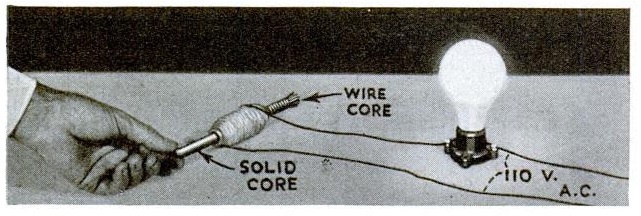
Eddy currents in solid core (left) and laminated core (right). Wikipedia image. This file is made available under the Creative Commons CC0 1.0 Universal Public Domain Dedication.
This simple experiment from eighty years ago shows how to experimentally verify the existence of eddy currents in the core of an electromagnet or transformer.
A coil of wire through which house current is passing is wound over two cores. One half is a solid piece of iron, and the other half consists of pieces of wire bundled together. The magnetic field in the coil, which changes direction 60 times per second, sets up eddy currents in the solid core, and the result is that it becomes noticeably warm. In the core consisting of wire, the currents are broken up, and the effect is not noticed.
Of course, it goes without saying that the aspiring scientist should be careful using household current in an experiment. But as long as all of the connections are properly made and insulated wire is used, the experiment is perfectly safe, and would make a good science fair experiment.
The image is from the December 1936 issue of Popular Science.
In transformers, eddy currents are undesirable, since they cause unwanted heat and inefficiency. However, they have some practical applications, such as levitation and braking.

